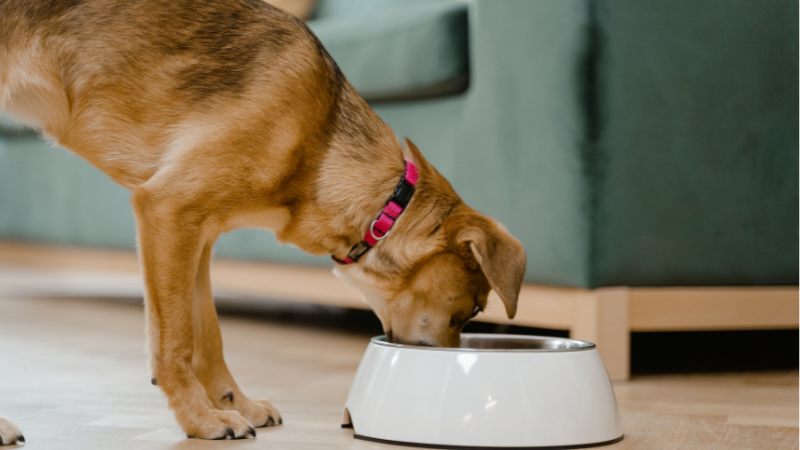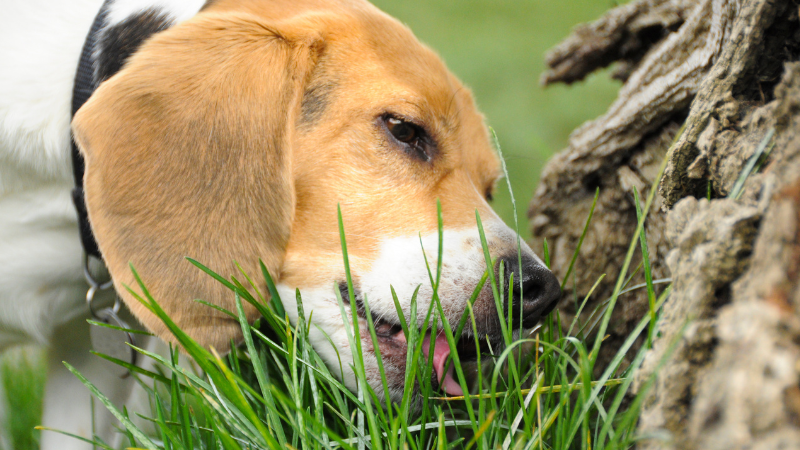Can Dogs Eat Plums? (Complete Analysis With Pros and Cons)

Dogs love to explore and try new things. It is impossible to deny their passion for eating, and as a responsible pet owner, you must have a solid understanding of the kinds of meals that are appropriate for your four-legged buddy to ingest. One fruit that is often questioned is plums. Can dogs eat plums? Let’s find out.
Well, the answer to this question is complicated, as dogs can only eat plums only if their pit is removed, i.e., they are allowed to only eat the flesh of plums. Additionally, the flesh must also be served in moderation, and plum pits should never be served. This is because the pits contain cyanide, which can be poisonous, and their high sugar content can cause stomach distress to dogs.
Before adding new food items, such as plums or any other stone fruits to your dog or pet’s diet, try to discuss the matter with your dog’s veterinarian is strongly recommended.
What Are Plums?
Plums are a type of fruit that may be found in various colors, from purple to yellow to green to red. Plum flesh is usually luscious and soft, and they feature a hard stone or pit in the middle of its distinctive round or oval form.
Plums are not only tasty but also very high in various beneficial elements. They are rich in dietary fiber, antioxidants, vitamins C and K, potassium, and other essential nutrients.
Tip: A single plum tree can produce 70 kg to 140 kg of plums per year. That’s the reason plum trees are known as wonder trees.

Are Plums Safe for Dogs?
Although it’s usually fine for dogs to consume plums, a few dangers are associated with doing so. Plum pits are a potential health hazard for dogs since they are packed with cyanide, which may be fatal in large quantities.
Cyanide is a chemical that can potentially interfere with the body’s capacity to transport oxygen, resulting in significant health issues such as adverse reactions such as seizures, unconsciousness, and even death in dogs.
It is essential to remember that the quantity of cyanide contained in a plum pit is relatively small, meaning that your dog would have to swallow a significant amount of pits before experiencing any adverse reaction.

But, to prevent any potential risk, removing the pits from the plums before feeding them to your dog is essential.
Plums, due to their high sugar content, also have the potential to cause tooth decay. Consuming excessive sugar can cause gastrointestinal problems in dogs, including nausea, vomiting, and diarrhea.
This is because dogs cannot handle sugar in the same manner that people do. You must provide plums to your canine companion in moderation and more so in the form of a special treat than as a regular diet component.
Here you can find all the possible side effects of cyanide toxicity/poisoning in dogs.
Benefits of Feeding Plums to Dogs
Although there are certain dangers involved with feeding plums to dogs, there are also some positive health effects that come along with eating them. Plums are rich in fiber, which can assist in regulating your dog’s digestive system and promoting healthy bowel movements. Plums are a fantastic source of fiber.

They also include vitamins and minerals that are necessary for overall health, such as vitamin C, which may help enhance your dog’s immune system. These vitamins and minerals ensure your dog maintains a healthy body.
In addition, plums are a healthy source of antioxidants, which can assist in guarding your dog’s cells against the harm produced by free radicals.
Free radicals are molecules that are unstable and have the potential to make oxidative stress in the body, which can lead to inflammation and other health issues. Antioxidants help neutralize these potentially dangerous chemicals, lowering the risk of illness.
How to Feed Plums to Your Dog?
If you do want to give your canine companion plums, there are a few things you need to bear in mind before doing so. Before giving them to your dog, you must remove the pits.
The task may be accomplished quickly and easily by slicing the plum in half and scraping out the pit with a spoon or knife. Be careful to dispose of the pit securely, out of your dog’s reach, so it doesn’t get swallowed.
After that, give the plum an excellent scrub to get rid of any dust or pesticides that could be clinging to its skin.
Give chopped plums to dogs as whole dog plum may pose a threat of choking hazard or intestinal blockage. So, to promote healthy digestion give plums to your dog carefully.
It is recommended to provide your furry friend with fresh and ripe plums rather than canned or dried plums since they may have added sugars or preservatives that are not good for your dog’s health. Fresh plums also taste better.
Lastly, you should only give your dog a small number of plums. While they can have some positive effects on one’s health, consuming too many fruits too much of them might cause intestinal distress as well as other health problems.
It is recommended practice to restrict your dog’s consumption of fruit to no more than ten percent of their overall pet diet daily. Additionally, try offering some other fruits to your dogs if you think plums are toxic to dogs.
What Should You Do if Your Dog Eat Plums Pits?
You must take proactive steps in case your dog consumes a plum pit/plum stone to avoid any potential health complications. It is essential to keep your dog away from the pits of plums. If your dog eats or has consumed a plum pit, the following actions need to be taken:
- Stay calm and assess the situation: Guess how many pits your dog has consumed and determine whether or not any symptoms have shown. It is essential to keep in mind that not all dogs will display signs of cyanide poisoning, and the severity of these symptoms might differ from dog to dog.
- Call your veterinarian: Contact your animal hospital’s staff as soon as possible and explain what’s transpired. They will be able to advise you on the best course of action depending on the number of pits consumed and your dog’s specific health requirements.
- Monitor your dog: Keep a tight check on your dog and look for any signs of cyanide poisoning, including but not limited to nausea, vomiting, diarrhea, trouble breathing, drowsiness, seizures, or coma. If any symptoms appear, you should get a vet immediately.
- Induce vomiting: If your veterinarian feels it necessary, they may prescribe that you induce vomiting to eliminate any pits that may still be present in your dog’s stomach. Under no circumstances should you attempt to induce vomiting unless specifically told to do so by your veterinarian.
- Seek veterinary care: If your pup exhibits cyanide poisoning symptoms or has ingested many pits of plum fruit, seek vet care immediately. Your dog may need to be hospitalized for supportive treatment, such as intravenous fluids and oxygen therapy, which can be provided by your veterinarian.

FAQs
What is Plum Poisoning?
Plum poisoning, commonly referred to as cyanide poisoning (due to hydrogen cyanide), is a condition that can develop in dogs if they swallow the pits of plums (even a few bites). When consumed, amygdalin, a substance containing plum pits, it can cause the body to produce cyanide.
Cyanide is a potent poison that, if ingested in sufficient quantities, can lead to major health problems and even result in death.
Plum poisoning in dogs can present itself in a variety of different ways depending on the amount of cyanide that was consumed and the size of the dog. The following are some of the most often observed signs of plum poisoning in dogs (due to eating excessive dog plums):
- Dyspnea (Difficulty breathing)
- Tiredness
- Vomiting/Stomach Upset
- Diarrhea
- Convulsions
- Coma
You must seek veterinarian attention as soon as possible if you have any reason to believe that your dog may have consumed plum flesh along with its pits and is exhibiting any of the symptoms listed above.
Your dog’s veterinarian may provide activated charcoal or induce vomiting to remove any leftover pits from your dog’s stomach. In more severe circumstances, it may be necessary to hospitalize your dog to provide it with supportive treatment such as oxygen therapy and intravenous fluids.
Here, you can check out all the ASPCA-listed toxic plants (including plums)
Plum Juice: Is It Safe for Dogs to Drink?
Plum juice is safe for dogs to consume, but it should be given to them rarely (occasional treat) and in only very little amounts.
Plum juice from a whole plum has too much sugar, which, when eaten in excessive amounts, can cause digestive issues such as nausea, bloating, and even vomiting along with suppressing the pet’s immune system.
In addition, there is the possibility that some plum juice has extra sugars or preservatives, both of which are bad for your dog’s health. Also, the plum plant is considered toxic to dogs.
Conclusion: Can Dogs Eat Plums?
Plums may be a nutritious, healthy snack and tasty treat for your pet if eaten in moderation if the pits are removed. They are an excellent source of dietary fiber, vitamins, minerals, and antioxidants, all of which are necessary for maintaining good health in general.
